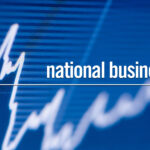I crossed into Windsor yesterday from Detroit, where the trucks at the Ambassador Bridge were stacked deeper than I’ve seen since the pandemic blockades. Speaking with drivers, many express the same anxiety that’s rippling through Ottawa’s corridors of power: what happens to the $2 billion in daily cross-border trade if Donald Trump returns to office?
“We’ve been through this dance before,” says Marcel Tremblay, a Quebec-based logistics manager I’ve interviewed during previous trade disputes. “But this time feels different. The rhetoric is more severe, and Canadian officials aren’t hiding their concern.”
Behind closed doors in Ottawa, an urgent recalibration is underway. Multiple sources within Global Affairs Canada confirm that Deputy Prime Minister Chrystia Freeland has assembled an emergency trade task force specifically focused on Trump-proofing Canadian exports. Their mandate: secure as many binding trade guarantees as possible before November’s U.S. election.
The stakes couldn’t be higher. Canada depends on the U.S. market for approximately 75% of its exports, according to Statistics Canada data. Meanwhile, Trump has repeatedly signaled his intention to impose “reciprocal tariffs” of up to 20% on all trading partners, with particular emphasis on neighbors he believes have taken advantage of American generosity.
“The Americans are perfectly aware of our accelerated timeline,” explains Dr. Sanjay Ruparelia, a trade policy expert at Toronto Metropolitan University. “This creates both leverage and vulnerability for Canadian negotiators. The U.S. knows we’re desperate to lock in protections, but they also recognize the mutual economic devastation that would follow a trade war.”
What makes these negotiations particularly complex is the sectoral vulnerability. Energy exports remain relatively secure given U.S. dependency, but manufacturing – particularly automotive and aerospace – faces existential threats under potential Trump tariffs. The integrated supply chains mean components often cross the border multiple times before final assembly.
At the Canada-United States Business Association conference in Montreal last week, I watched U.S. Commerce Department officials maintain public optimism while Canadian counterparts worked the room with noticeably more urgency. The contrast was striking.
“We’ve already seen what Trump-era tariffs can do,” says Catherine McKenna, former Minister of Environment and Climate Change. “The steel and aluminum tariffs in 2018 cost thousands of jobs on both sides of the border. Now imagine that approach applied across all sectors simultaneously.”
According to internal government projections obtained through sources at Finance Canada, a 10% blanket tariff on Canadian exports would immediately reduce GDP by 1.5%, with job losses potentially exceeding 150,000 within six months. At 20%, which Trump has floated as his preferred level, the economic damage approaches recession territory.
What’s particularly troubling for Canadian negotiators is the unpredictability factor. Unlike conventional trade disputes conducted through established channels like the WTO or bilateral mechanisms, Trump’s approach to tariffs has historically bypassed these systems by invoking national security concerns – a strategy that proved legally resilient during his first term.
The current negotiations focus on three main areas: strengthening enforcement mechanisms within the existing CUSMA framework; securing sector-specific carve-outs for essential industries; and developing contingency plans for rapid response if tariffs are imposed.
Walking through the Automotive Parts Manufacturers’ Association facility in Windsor yesterday, I saw firsthand the integration that makes disentanglement nearly impossible. Parts flow seamlessly across the border, with some components crossing three or four times during production.
“You can’t just flip a switch and reorganize these supply chains,” explains Flavio Volpe, president of the APMA. “The automotive sector alone represents over $100 billion in cross-border trade. Disrupting that has consequences that ripple through communities on both sides.”
The Canadian government has deployed an unprecedented diplomatic effort, mobilizing provincial premiers, business leaders, and even former prime ministers to leverage every possible relationship with American counterparts. The outreach extends beyond Washington to state governors and congressional representatives whose districts depend on Canadian trade.
Public figures maintain optimism, but privately, the mood is somber. “We’re planning for worst-case scenarios,” admits a senior official at Export Development Canada who requested anonymity to speak candidly. “We’re developing bridge financing programs to help companies survive potential tariff shocks while supply chains reorganize.”
The Bank of Canada has quietly run stress tests modeling various tariff scenarios, with Governor Tiff Macklem reportedly warning cabinet that interest rate reductions would be necessary to counter the economic contraction should significant tariffs materialize.
What makes this round of negotiations distinct from the original NAFTA renegotiation is the timeline. Canadian officials have mere months to secure protections that would normally take years to negotiate. The pressure has created unusual cooperation between normally competitive industrial sectors, all recognizing the common threat.
“We’ve seen Liberal and Conservative politicians close ranks on this issue,” notes former diplomat Colin Robertson. “When it comes to the U.S. relationship, partisan divisions tend to fade. The challenge now is converting that unity into tangible protections before November.”
As night falls in Windsor, the trucks continue rolling across the Ambassador Bridge. For now, commerce flows uninterrupted. But the anxiety in both capitals is palpable, with both sides recognizing that the foundations of North America’s integrated economy face their greatest test since the free trade agreements were first negotiated decades ago.
Whether Canada’s preemptive negotiations succeed will depend not just on diplomatic skill, but on convincing American counterparts that protectionism would be mutually destructive. As one automotive worker told me before I left Windsor: “They can put up all the tariffs they want, but we build these cars together. Always have.”






